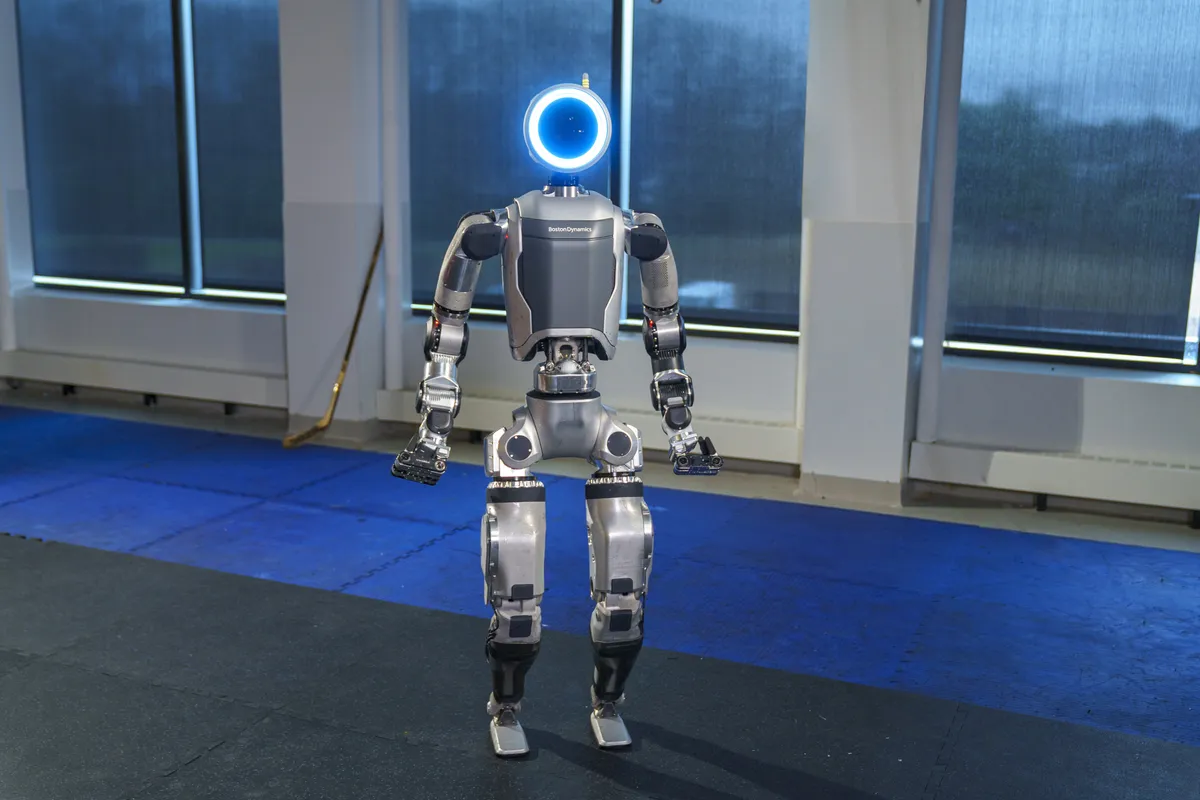Atlas
Boston DynamicsResearch
Available
Overall Score92/100
Contact for Pricing
World's most advanced humanoid robot featuring unprecedented mobility and dynamic balance capabilities. New electric version with improved efficiency.
Height:1.5m
Weight:89kg
Released:2024
Last Tested:2024-01-20

Demo Video
Atlas Performance Profile
Robot
Human Baseline
92
Mobility
(20%)
95
Explosive
(10%)
96
Stability
(15%)
75
Dexterity
(20%)
88
Perception
(15%)
65
Language
(10%)
90
Safety
(5%)
70
Energy
(5%)
75
Generalization
(5%)
70
Maintenance
(5%)
Specifications
Height1.5m
Weight89kg
Degrees of Freedom28
Actuator TypeElectric motors
Power SourceLi-ion Battery
Operating Time1-2 hours
SensorsLiDAR, Cameras, IMU
ComputingCustom real-time system
Key Features
Dynamic balance and mobility
Terrain adaptability
Backflip and running capabilities
Advanced hydraulic/electric actuation
Real-time environmental perception
Test Info
Last Tested
2024-01-20
Test Location
Boston Dynamics Lab
Certifications
Research Safety Approved
Detailed Test Results
10-Dimensional EvaluationWalking Speed
89/ 100m/s
Max speed 2.5 m/s vs human 1.3 m/s
Performance vs Human Baseline89%
Test Method: 100m walking test
Endurance
50/ 100hours
1-2 hours vs human 8 hours
Performance vs Human Baseline50%
Test Method: Continuous operation test
Agility
98/ 100score
Exceptional dynamic movement
Performance vs Human Baseline98%
Test Method: Agility course assessment
Category Average:92/100
Weight:20%
Human Baseline:100/100
10-Dimensional Test Protocol
All tests conducted according to the comprehensive humanoid robot evaluation standards with human performance as baseline (100%). The new system evaluates: Mobility (20%), Dexterity (20%), Stability (15%), Perception (15%), Explosive Power (10%), Language (10%), and four supporting dimensions (5% each).
Advantages
World-leading dynamic mobility
Exceptional balance and agility
Proven in challenging environments
Advanced control algorithms
Strong research and development team
Limitations
High power consumption
Limited manipulation dexterity
Expensive and complex
Research-focused rather than commercial
Limited language interaction